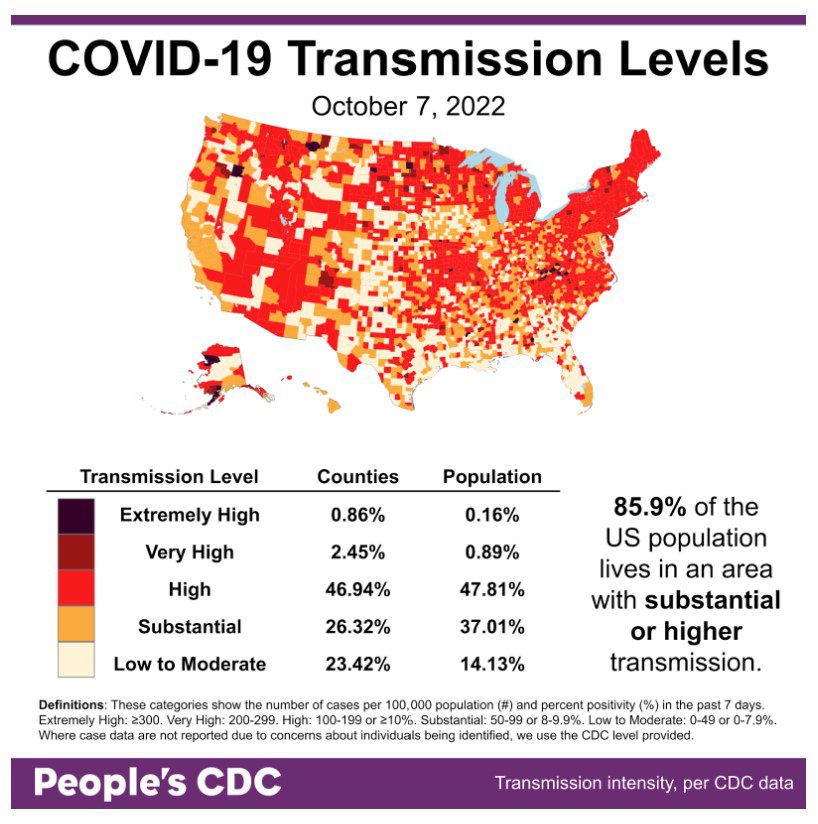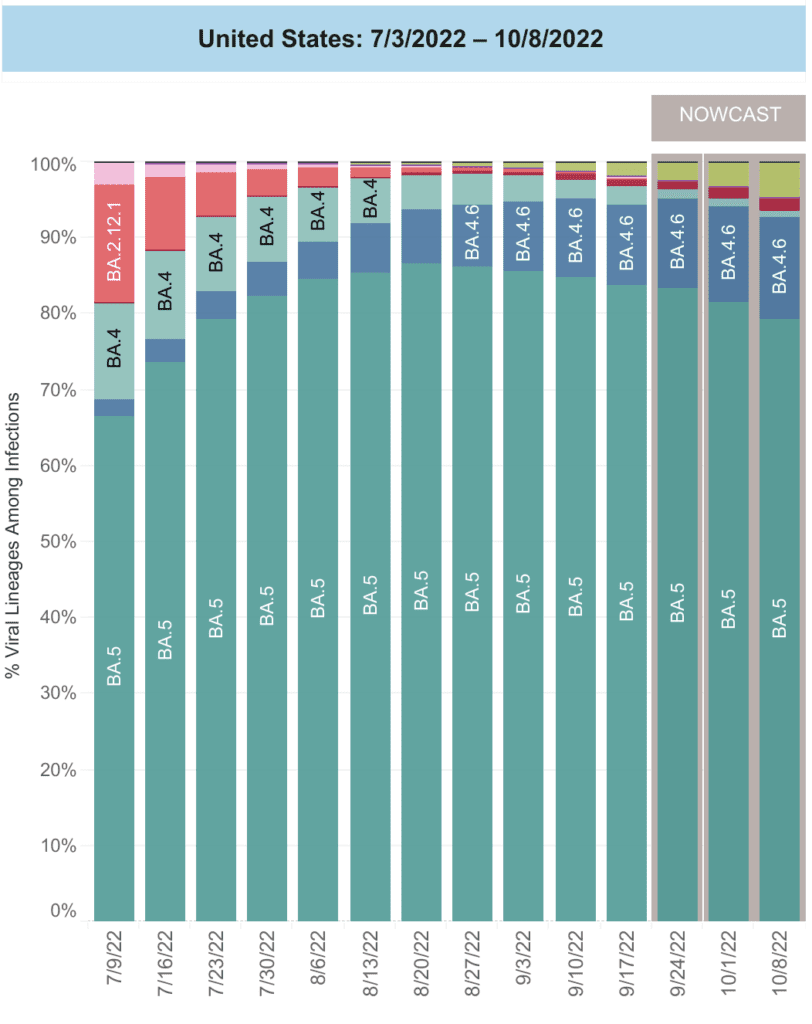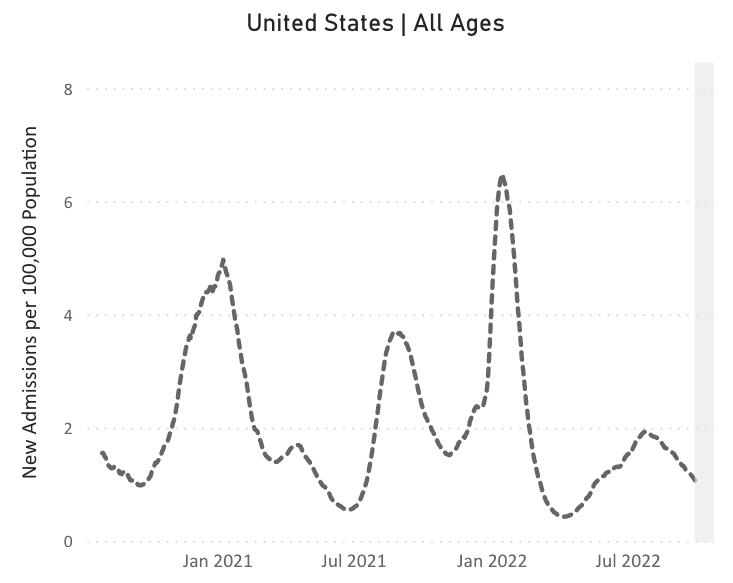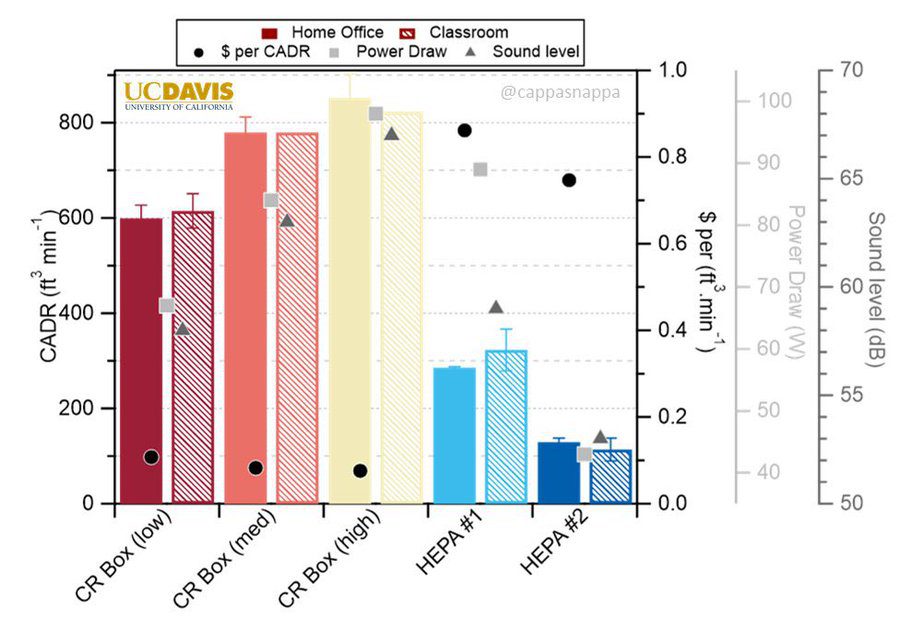El clima: The map continues to trend calmly, although 85.9% percent of the population still lives with substantial or higher transmission. While a calm trend is welcome, layers of protection are always necessary to minimize any uptick the colder seasons may bring.

Sobre variantes: El variant picture is similar to last week. BA.5 is most common, down to 79% & still declining. BA.4.6 (blue, Aeterna) increased to 14% and BF.7 (lime green, Minotaur) increased to 5%. The Northeast is seeing more of both Aeterna & Minotaur, while Minotaur is common in Central Plains.

Hay many, many other variants out there, all competing to see who can best outpace our immunity. The pandemic is not over y we need to engage all layers of protection.
Monitoreo de aguas residuales: Nationally, we continue to see a decrease in niveles de aguas residuales. This is good news, but we are still far above the lowest points seen in the spring of ‘22 and the summer of ‘21. We can do more to suppress transmission.

Regionally, wastewater is the highest in the Northeast (orange), which is seeing another small wave – continuing a pattern seen all summer.

Hospitalizaciones: Hospitalizaciones are decreasing generally, which is good news. However, we are still seeing increases in the Northeast, as we highlighted last week.

Fallecidos: From September 29th through October 5th, 2,373 people died of COVID nationally.
Sobre COVID largo: El US census released updated estimates of Long COVID this week. Overall, 14% of all adults reported Long COVID (lasting more than 3 months), a percentage that has been consistent since June.
Scientists continue to learn about multiple pathways that can cause Long COVID. Other data suggest that LC may look different in older adults, perhaps related to severity. Additional data show that COVID is associated with an increase in new type 1 diabetes diagnoses in youth.
Protections: While we shouldn’t be left with only individual-level protections, it’s important to make the most of them. More studies show CR boxes are effective. This graph shows CR boxes clean more air (higher CADR) for less money (black dots) than some HEPA air filters.

Learn how to make one at cleanaircrew.org.
Another important layer is staying up to date with vaccines. The newest Bivalent vaccines – available to those 12+ years old – are the first to be updated to Omicron (specifically, BA.5). However, messaging has been poor, resulting in a lack of awareness and thus, low uptake.
For an explanation on how the immune system interacts with COVID and the vaccines, Dr. Jeff Gilchrist, PhD has a wonderful thread.
El CDC changed guidance around when healthcare workers need to wear masks. However, there’s a lot of confusion over which map to check. To be clear: healthcare settings are recommended to use masks when Community Transmission is high (not the falsely-calming green map).
The Community Transmission map is the same map we highlight every week at the top of the WR. We encourage masking at all times in all healthcare settings AND pharmacies so everyone, but especially immunocompromised people, can be safer when getting the care they need.
Finally, the CDC announced this week that they will be reporting COVID data less frequently. The PCDC believes the pandemic deserves attention & resources and will continue reporting weekly. We’ll keep you updated if we change data sources or timing of report information.
Notes: 1) The numbers in this report were current as of 10/7. The CDC updates data frequently as it receives refreshed information. Today’s numbers may be slightly different from the data here. 2) Check out the links throughout & see our website for more! https://peoplescdc.org.